Made By:
Black Mamba
Scale:
1/24
MSRP:
US$24.95
| Overview: | |
|---|---|
| Packaging (Design): | 7/10 |
| Packaging (Durability): | 9/10 |
| Casting (Body): | 10/10 |
| Casting (Interior): | 9/10 |
| Casting (Chassis): | 8/10 |
| Casting (Engine): | 8/10 |
| Paint (Exterior): | 9/10 |
| Paint (Interior): | 10/10 |
| Paint (Trim/Graphics): | 10/10 |
| Overall Panel Fit: | 10/10 |
| Total Score: | 9.0/10 |

Other Transformers Models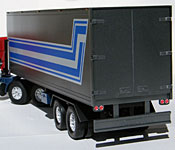
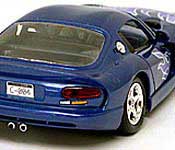
Beast Wars Optimus Primal
Robots In Disguise Prowl (Super)
Robots In Disguise Sideways
Dark of the Moon Leadfoot
Revenge of the Fallen Sideswipe
G1 Sideswipe
Transformers Bumblebee
Robots In Disguise Side Burn
Armada Mini-Cons
G1 Cliffjumper
Robots In Disguise Drift
Robots In Disguise Bumblebee
G1 Mirage
Revenge of the Fallen Skids
Robots In Disguise Sideswipe
Machine Wars Prowl
G1 Prowl
G1 Bluestreak (Anime)
Revenge of the Fallen Mudflap
Other 2020s Movie Models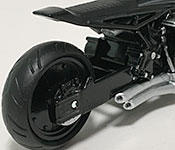
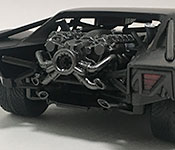
Soul Pizza Planet Truck
The Batman Batmobile (Review)
Rise of the Beasts Bumblebee (Review)
The Batman Batcycle (Review)
Super Mario Bros. Movie Van (Review)
Red Notice Porsche Taycan
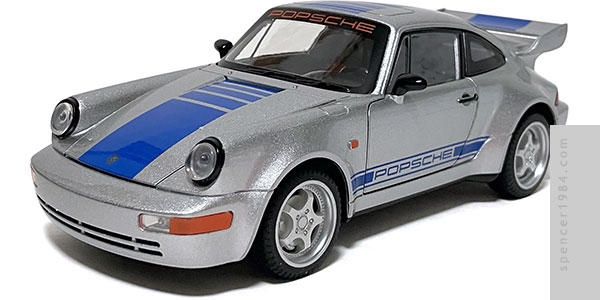
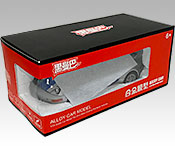
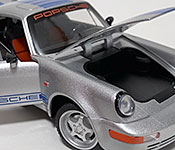
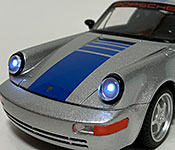
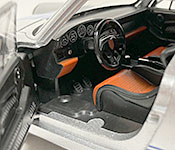
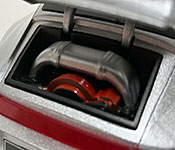
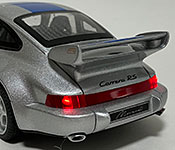
Background
Mirage's sacrifice near the end of Rise of the Beasts was supposed to be his end, but test audiences hated losing him so much that a mid-credit scene was filmed showing Noah's work returning him to functionality.
Packaging
The packaging is a very generic window box, measuring approximately 9¼" (23.5cm) x 4½" (11.5cm) x 4" (10cm) with a "letterbox" window cut in the front panel and one end flap. It's split about evenly between black and red, and between Chinese (simplified) and English. The company name, "alloy model," and information blocks are in the former, while the age callout, vehicle description, scale, and instructions on the back panel are the latter. Callouts for the various functions are done with icons along the bottom edge of the back panel and window end flap. Inside, two large styrofoam blocks capture the car with a cutout between them that lines up with the outer box's window. The effect is slightly negated by a piece of tissue paper draped over the car, protecting the paint but obscuring it from view. Overall not much to look at, but it gets the job done.
Casting/Paint
A very well-done diecast overall. The body - including the doors, engine cover, and trunk lid - are all diecast and have a nice smooth finish with only light parting seams on the corners of the rear bumper and tops of the front fenders. Panel fit is excellent, with tight even gaps all around and on par with the nonfunctional panel lines of the sunroof and fuel fill. Black plastic is used for the headlight bezels and sideview mirror housings; clear plastic is used for the front marker lights, headlights, and glass; transparent red is used for the taillight panel; and chrome plastic is used for the mirror inserts.
Paint is equally good, with a glossy metallic silver and bright blue making up the majority of the finish. Black is used for the window surrounds and door handles, and orange is used for the corner and fender marker lights. There are several nice details throughout, with a sharply detailed front badge, rear window defroster lines, and the Carrera RS rear badge among the highlights. The windshield and door lettering use an appropriate typeface but spell out "Popsche," leaving the new owner to add the missing leg. Coverage and alignment is excellent across the board.
The interior is just as good as the exterior, with two-tone seats, a fully detailed dashboard with printed gauges and stitching, and detailed door panels with textured inserts and more stitching. It's arguably light on detail with the pedals and levers cast in rather than separate pieces, but when everything is cast so sharply and detailed so beautifully it's hard to knock it. The cargo area is a simple black box, and the engine is a basic but passable representation of Porsche's air-cooled boxer with a red fan and silver intake manifold.
Despite the myriad functions they crammed in here, even the chassis looks pretty good. The floor pan ribs, rear suspension, and some of the engine can be made out around the switch, speaker, and battery box. A separate silver exhaust with hollow tips is attached just inside the rear bumper. The wheels are silver five spokes wrapped in soft vinyl tires, and are probably the weakest part of the model as they have the brake rotors and calipers cast in place so they spin with the wheel.
Features/Accessories
The doors, engine cover, and cargo lid all open and close on stiff but smooth joints. A small button is located under the front bumper to pop the lid and give you something to grab onto to open it, and the doors actually tuck inside the front fenders when they're open - nice attention to detail in both cases. Also, the mirrors can be folded back and the front wheels can be turned (but return to center) and are tied to the steering wheel, all four wheels are individually sprung, and the rear axle has a pull-back motor that zips the car along on any flat smooth surface.
All good stuff, but we're not done. Next to the cargo lid button is a slider switch. Full left is "off." Moving it to the middle position activates the lights, which make the headlights and taillights glow brightly and steadily. The far right position activates the full light and sound feature. With the button in this position, pushing down on the front axle flashes the lights and makes sounds of an engine startup, rev, acceleration, and braking. Opening either door flashes the lights and blows the horn twice, followed by the "doot-doot" of a car alarm.
Accuracy
As a..."Popsche"...this is an excellent replica. The front bumper may be a tad flat, but really that's just looking to nitpick. I do wish they had done the wheels more like Welly did with their 964, as they're really the only part of the car that looks off. As Mirage, it's arguably as close to the character as the official releases have been. The only real error is the roof stripe and windshield lettering, which weren't part of the movie car. Mirage should also have the U.S.-spec marker lights and rear bumper. Scaling is a tad large, coming it at about 1/22~1/23.
Overall
Black Mamba is known for their KO Transformers figures, so it's no real surprise that their diecast division would pop out an unofficial movie character. While it's not an exact match, the quality is excellent and the number of features they managed to cram in here is unbelievable.
Send me an e-mail with your thoughts!